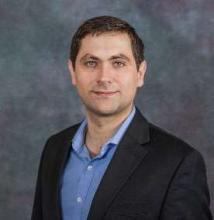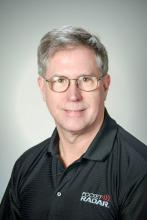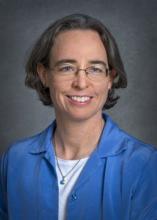Machine Learning

Dr. Shahrad Jamshidi
Data Scientist
Remi Pty, Australia
Thu, 10/03/2019
Abstract - Machine learning methods have allowed us to create many powerful and practical models from data to develop many new and life changing technologies. Understanding the underlying algorithms behind the methods provides insight into how the data is being used to learn patterns and achieve the specific goal. This talk will give a quick run through of some common methods used in data science and the assumptions that are behind each of them.
Dr. Shahrad Jamshidi is a data scientist and co-founder at the Australian startup, Remi AI. He works remotely in Santa Rosa, where he implements different machine learning algorithms on a wide range of consulting projects. He received his doctorate in Applied Mathematics at the Freie Universitaet Berlin, Germany and his Bachelor of Science at the University of Sydney, Australia. His collaborations with biologists and ecologists during his graduate research pushed him in the direction of data analysis and machine learning.
Nonreciprocal manipulation of electromagnetic waves

Dr. Sebastian Gomez-Diaz
Assistant Professor
ECE Department, UC Davis, Davis, CA
Thu, 09/19/2019
Abstract - This talk presents novel approaches to realize nonreciprocal microwave and photonic devices without reliance on magneto-optic effects. First, I will discuss the possibilities enabled by timemodulation to implement a wide variety of low-loss nonreciprocal microwave components exhibiting fascinating functionalities, including (i) phased-array antennas that independently control their transmission/reception radiation patterns at the same operation frequency; (ii) gradient metasurfaces able to arbitrarily manipulate beams propagating in freespace; and (iii) bandpass filters and planar antennas. Then, I will describe new exciting opportunities offered by graphene and 2D materials to break and tame time-reversal symmetry at terahertz and infrared frequencies. In particular, I will focus on the spatio-temporal modulation of graphene’s conductivity to realize plasmonic isolators and how drift-currents can be exploited to construct ultrathin metasurfaces supporting plasmons completely immune to backscattering. I will finalize by discussing challenges and opportunities in the nascent field of magnetless nonreciprocity.
Dr. Sebastian Gomez-Diaz is an Assistant Professor in the Electrical and Computer Engineering Department of UC Davis, CA. He received his Ph.D. degree in EE (with honors) from the Technical University of Cartagena (UPCT, Spain) in 2011. From October 2011 to March 2014 he was a postdoctoral fellow at the École Polytechnique Fédéral de Lausanne (EPFL, Switzerland). Then, from May 2014 to August 2016, he continued his postdoctoral work in the Metamaterials and Plasmonic Research Laboratory of the University of Texas at Austin, TX. He has received several recognitions, including the NSF CAREER Award in 2018 and the Leopold Felsen Award for Excellence in Electrodynamics in 2017. His main research interests include multidisciplinary areas of electromagnetic wave propagation and radiation, metamaterials and metasurfaces, plasmonics, 2D materials, non-linear and nonreciprocal phenomena, and other emerging topics on applied electromagnetics and nanotechnology.
Radar Technology: History and Future Trends

Mr. Chris Stewart
President & COO
Pocket Radar, Santa Rosa, CA
Thu, 09/05/2019
Abstract - Radar Technology has been around for over 100 years and has made a huge impact in our lives. This presentation will review the history of Radar Technology from the origins of Electromagnetics to present day applications in our everyday lives. It will also cover future developments and trends as this critical technology is being deployed in many new and exciting ways.
Mr. Chris Stewart is a Co-Founder and President/ COO of Pocket Radar Inc. His engineering and innovative mindset began early in life; he built his first radio transmitter at age eight and at age 16 he invented a novel radio-controlled switching system that won first place in a state-wide electronics competition. He then attended and graduated with his BS in Electrical Engineering from the Ohio State University. Since then Mr. Stewart has gained extensive experience building strong development teams and leading new product introductions. He spent 10 years as an R&D engineer at Hewlett Packard, developed multiple products including test system components used to calibrate every Radar system in the US Navy, has published multiple papers and technical articles and holds five granted patents with more pending. He is a member of the Institute of Electrical and Electronics Engineers (IEEE), where he serves on the committee that sets all of the specifications for Law Enforcement Radar devices. In addition to serving as President and COO of Pocket Radar Inc., Mr. Stewart lectures in Electrical Engineering and Business Entrepreneurship at Sonoma State University (SSU), serves as chairman of the External Advisory Board for the SSU Makerspace, and is the Lead Industry Advisor for the Electrical Engineering Department. His latest roll at SSU is serving as the Entrepreneurin- Residence for the School of Business and Economics where he mentors aspiring entrepreneurs and students.
The Advanced Light Source at Lawrence Berkeley Lab: Beamline Science, Design and Control

Dr. Corie Ralston
Head, Berkeley Center for Structural Biology/Scientist
Lawrence Berkeley National Laboratory, CA
Thu, 04/18/2019
Abstract - The Advanced Light Source at Lawrence Berkeley National Laboratory: Beamline Science, Design, and Control The Advanced Light Source (ALS) is a national user facility designed to produce extremely bright X-Ray beams. Currently, there are over forty X-ray beamlines available at the ALS, all operating simultaneously but designed for different types of experiments in a wide range of fields, from discovery of new superconductors to characterizing protein structure. Chemists, physicists, and biologists from around the world apply for time at the ALS, and conduct experiments either onsite or remotely. The design and control of these beamlines requires a team of engineers and scientists, and typically is achieved through LabView and EPICS interfaces to motors, mirrors, and other specialized hardware. In this talk, I will cover the range of experiments conducted at the ALS, the types of software and hardware control used, and the exciting science that is enabled by the facility.
Dr. Corie Ralston has a bachelors in Physics and a doctorate in Biophysics. She completed a post-doctorate at Brookhaven National Laboratory in synchrotron techniques to study RNA structure, and is now at Lawrence Berkeley National Laboratory, where she started as a beamline scientist in 2002. Since 2012 she has been head of the Berkeley Center for Structural Biology, which runs five macromolecular crystallography X-Ray beamlines, and develops new synchrotron techniques at the Advanced Light Source.
Passive Optical Networks: Technology for Broadband Access to the Home

Dr. Rajiv Dighe
Sr. Product Line Manager
Broadcom, Petaluma, CA
Thu, 04/04/2019
Abstract - In this seminar, we will present a technology that has been used worldwide for providing broadband connectivity to the home. This technology is called Passive Optical Networks and is in mass deployment worldwide for Fiber To The Home (FTTH) initiatives. We will talk about the market drivers for this technology, the market dynamics and the applications that are driving the need for this technology in the home. We will talk about the different standards for this technology, the in-home applications that are being driven by this technology including WiFi access and IOT devices that are being controlled by the Fiber-based Home Gateway that is the hub of the smart home.
Dr. Rajiv Dighe manages Broadcom’s Fiber-based Home Gateways (E/GPON) and is based in Petaluma, California. Rajiv got his Ph.D. in Electrical Engineering from University of Notre Dame and has been working on Broadband networks ever since. He started at AT&T Bell Labs in Holmdel, NJ, followed by NEC Research Center in Princeton, NJ where his work led to a startup on Broadband Access Multiplexers – Eulix Networks that he headed as the CTO. He then moved to the Semiconductor Industry working at Globespan, Conexant and finally Broadcom.